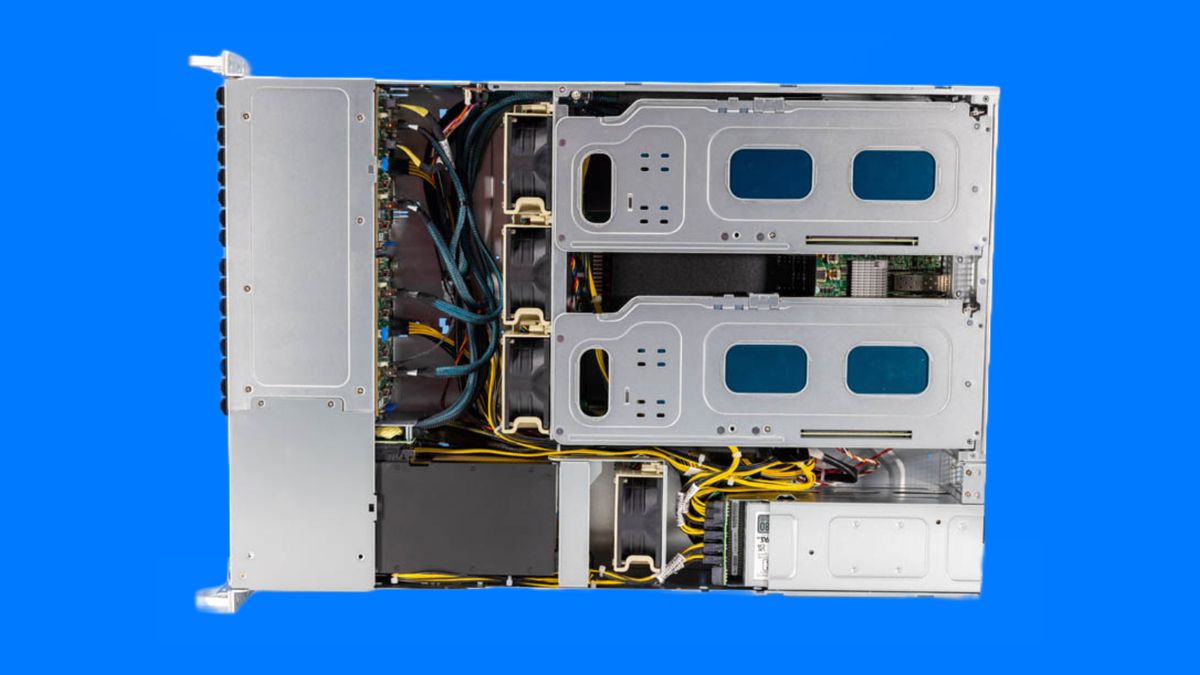
Supermicro recently unveiled an Arm-based server – the ARS-210M-NR and Servethehome took it for a spin (opens in new tab), loading it with four Nvidia A16 cards.
The test server came with a 128-core Ampere Altra Max Arm processor, running at 3GHz, with 16 DDR4 memory modules (512GB memory in all), two 25GbE-capable SPF28 ports, 16 2.5inch bays and a pair of 2Kw power supply units, all nicely assembled in a tool-less chassis.
The cherry on the cake is the quartet of Ampere-based Nvidia A16 graphics cards. Each card comes with 64GB of GDDR6 ECC memory and four GPUs that sit on a full height full length dual slot, passively cooled PCB. The A16 is not the most powerful data center card that Nvidia has; that would be the A100; however, it hits a sweet spot for service providers looking to get the maximum number of concurrent users on a single board.
But can it run…
In terms of pure performance, each of these GPUs has half the number of CUDA cores of the Geforce RTX 3050, so yes it should be able to run the legendary Crysis game without too much issue – so in theory, you could have 16 iterations of one of the most taxing games ever running concurrently – you just need to create 16 virtual machines and load 16 copies of Crysis.
There were no pricing details provided but given that the A16 retails for around $3,000 and a fully loaded server with similar credentials costs around $10,000, you would be expected to fork out north of $22,000 for such a system.
Power to the cloud
Now who would need such a debauchery of power? For a start, cloud gaming is now mainstream (even if Google bailed out earlier this year when it mothballed Stadia) and it is the likes of the ARS-210M-NR that makes it a reality.
Beyond this though, it’s about VDI (Video Desktop Infrastructure) for businesses and enterprises. The rise of hybrid working acted as a catalyst for the adoption of Virtual Workstation (and Virtual PC) as work-from-home became a reality for millions of users. And just one of these servers can accommodate a lot of VMs (virtual machines); a recent test by cloud computing firm Nutanix showed that two Nvidia A16 graphic cards can handle 128 virtual machines, which means that four cards should be able to run 256.
Of course you may need to deploy a more powerful CPU than the Altra Max and more memory as well (Nutanix used 1.5TB RAM and two Intel Xeon Gold 6354, each with 18 physical cores). Increasing SaaS support for virtual GPU across a wide range of applications (e.g. Photoshop or Chrome) explains why dense servers with very high GPU count are becoming a common sight.
Other applications like web hosting may benefit from high CPU core count which is why VPS (virtual private servers) are so affordable now with the price gap with dedicated servers and bare metal solutions remaining high.
Servethehome ran the 2U server on Ubuntu and while the experience was not as smooth as it could be, it was certainly worth the effort. Arm is slowly turning into a formidable opponent to both Intel’s Xeon and AMD’s Epyc and with Amazon readying the fourth generation of its Graviton CPU family, there has never been a better time to try Arm.
Be the first to comment